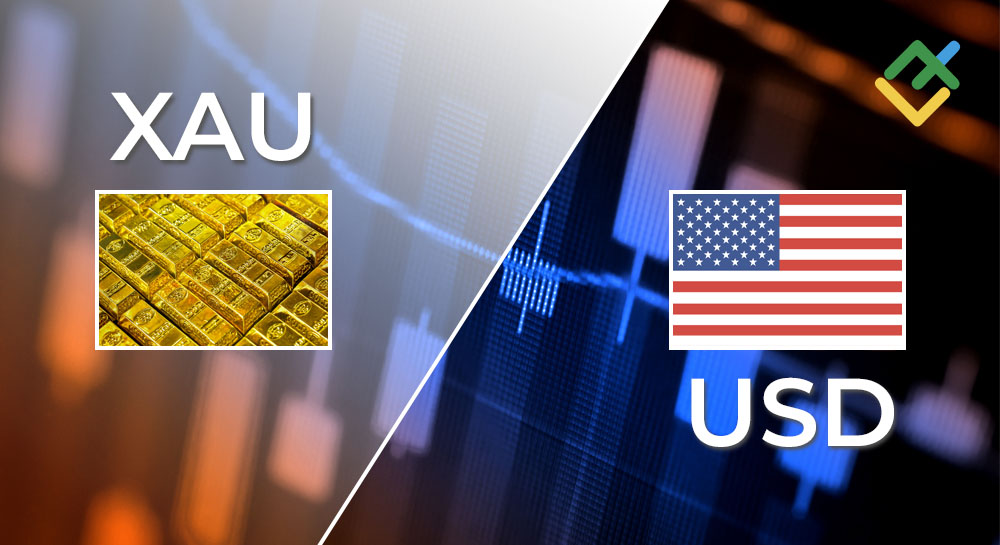
US dollar buyers are celebrating a victory, as the US dollar index nearly touched 107.00 by the end of the week before last. At the same time, US stock indices also remain bullish on the expectation of positive changes in the US economy after Donald Trump’s assumption of presidential office in the country.
However, Bitcoin and some other popular cryptocurrencies experienced more impressive growth last week.
Just two weeks after Trump’s victory, Bitcoin has skyrocketed by 32%. This rapid increase makes the 100,000 target increasingly attainable in the medium term.
In the upcoming week, 25.11.2024 – 01.12.2024, investors will focus on macro data on Australia, the US, Germany, Japan, the eurozone, Switzerland, and the results of the New Zealand Reserve Bank meeting.
Note: During the coming week, new events may be added to the calendar, and/or some scheduled events may be canceled. GMT time
The article covers the following subjects:
Major Takeaways
- Monday: no important macro statistics is scheduled.
- Tuesday: no important macro statistics is scheduled.
- Wednesday: US GDP for Q3 and PCE indexes, November FOMC meeting minutes.
- Thursday: German and Japanese CPIs.
- Friday: the eurozone CPIs
- The key event of the week: US PMIs
Monday, November 25
There are no important macro statistics scheduled to be released.
Tuesday, November 26
There are no important macro statistics scheduled to be released.
Wednesday, November 27
00:30 – AUD: Consumer Price Index
The Consumer Price Inflation Index, published by the Reserve Bank of Australia and the Australian Bureau of Statistics, gauges retail prices of goods and services in Australia. The CPI is the most significant indicator of inflation and changes in consumer preferences. A high indicator reading is positive for the Australian dollar, while a low reading is negative. Previous indicator values: +2.1% in September, +2.7% in August and +1.0% (+3.8% YoY) in Q2 2024, +1.0% (+3.6% YoY) in Q1 2024, +0.6% (+3.4% YoY) in Q4 2023, +1.2% (+5.4% YoY) in Q3, +0.8% (+6.0% YoY) in Q2, +1.4% (+7.0% YoY) in Q1 2023, +1.9% (+7.8% YoY) in Q4 2022, +1.8% (+7.3% YoY) in Q3, +1.8% (+6.1% YoY) in Q2 2022, +2.1% (+5.1% YoY) in Q1 2022, +1.3% (+3.5% YoY) in Q4, +0.8% (+3.0% YoY) in Q3, +0.8% (+3.8% YoY) in Q2, +0.6% (+1.1% YoY) in Q1 2021.
The Australian central bank’s CPI inflation target ranges between 2% and 3%. According to the minutes of a recent RBA Board meeting, the bank may need to increase interest rates over time to bring inflation back to the target range and take further measures in the coming months to stabilize monetary conditions in Australia.
Now, the RBA, like most of the world’s other major central banks, is facing persistently high inflation.
The expected positive CPI reading will likely strengthen the Australian dollar. If the indicator readings are worse than the forecast or the previous value, the Australian dollar will face short-term negative effects.
01:00 – NZD: New Zealand Reserve Bank’s Interest Rate Decision. Accompanying Statement
At the moment, the RBNZ interest rate stands at 4.75%. The regulator previously stated that the economy no longer needed the current level of monetary stimulus.
The RBNZ cut the official cash rate by 0.25% to 5.25% in August 2024 after eight consecutive meetings where the RBNZ held the rate unchanged. In October, the rate was reduced by 0.50%.
Economists anticipate further reductions in New Zealand’s borrowing costs amid a steady slowdown in inflation (3.3% YoY in Q2) and labor market volatility.
The New Zealand currency faced pressure following the unexpected RBNZ ‘s announcement to reduce the interest rateby 0.50%. The accompanying statement revealed that the decision was made amid expectations of a further decline in inflation, which is gradually returning to the target range of 1.0%–3.0%.
Inflation expectations have also lowered. Two-year inflation expectations have fallen from 2.33% in Q2 2024 to 2.03% in Q3, and the average one-year inflation expectations have dropped to 2.40% in Q3 against 2.73% in the prior quarter.
During this meeting, the RBNZ might decide to either reduce the interest rate once again, express support for further monetary policy easing, or keep the rate unchanged. Market participants monitoring the New Zealand dollar quotes should be prepared for a sharp increase in volatility during this period.
In the accompanying statement and commentary, the RBNZ officials will explain the interest rate decision and the economic factors that influenced it.
The New Zealand dollar quotes volatility may rise sharply during this time.
At the October 2024 meeting, New Zealand central bank governors cut the official cash rate (OCR) by 50 bps (to 4.75%) for the second consecutive time after an unexpected reduction in August and favored further monetary policy easing.
02:00 – NZD: Reserve Bank of New Zealand Press Conference
RBNZ Governor Adrian Orr will comment on the rate decision. Typically, volatility in the New Zealand dollar increases during the meeting. Orr’s speeches often serve as an unofficial source of information about the future direction of the RBNZ monetary policy. He believes that the country’s monetary policy should be aligned with the country’s employment performance and financial stability, as well as inflation.
13:30 – USD: US GDP Annual Growth Rate for Q3 (Second Estimate). Personal Consumption Expenditures (Core PCE Price Index)
GDP data is one of the key indicators, along with labor market and inflation data, for the Fed in terms of its monetary policy. A positive indicator reading strengthens the US dollar, while a weak GDP report is harmful for the currency. GDP grew 2.5% in Q2 after gaining +1.4% in Q1 2024, +3.4% in Q4 2023, +4.9%, +2.1% in Q2, +2.2% in Q1 2023.
If the data indicate a decline in GDP in Q3 2024, the US dollar will face significant pressure. Conversely, positive GDP figures will bolster the greenback and US stock indices.
The preliminary estimate stood at +2.8%.
Personal Consumption Expenditures (PCE) data reflect the average amount of money consumers spend per month on durable goods, consumer goods, and services. The core PCE price index excludes food and energy prices. The annual core PCE is the main inflation gauge used by the US Fed as the primary inflation indicator.
The inflation rate, along with the labor market and GDP data, is crucial for the Fed in determining its monetary policy. Growing prices exert pressure on the central bank to tighten its policy and raise interest rates.
The PCE data above the forecasted and/or previous values may boost the US dollar, while a decline in the reading will likely exert a negative impact on the greenback.
Previous values YOY: +2.7%, +2.7%, +2.6%, +2.6%, +2.6%, +2.8%, +2.8%, +2.8%, +2.9% in January 2024, +2.9%, +3.2%, +3.5%, +3.7%, +3.8%, +4.3%, +4.3% +4.7%, +4.8%, +4.8%, +4.7%, +4.7%, +4.6%, +4.8%, +5.1%, +5.2%, +4.9%, +4.7%, +4.8%, +4.7%, +4.9%, +5.2%, +5.3%, +5.2% in January 2022.
19:00 – USD: Federal Open Market Committee Meeting Minutes
The FOMC minutes release is extremely important for determining the course of the Fed’s current policy and the prospects for US interest rate hikes. Volatility in financial markets usually increases during the minutes’ publication, as they often reveal changes or provide clarifications from the latest FOMC meeting.
Following the November 7, 2024 meeting central bank governors decided to reduce the federal funds rate by 0.25% to 4.75% and indicated a leaning towards further monetary policy easing to bolster the labor market.
However, Fed Chair Jerome Powell stated that a pause in rate cuts is also possible. He emphasized that the US Fed officials remain confident that inflation is on track to reach the 2.0% target and that there is no need to rush to reduce rates given continued economic growth and a robust labor market. Markets now expect one more interest rate cut this year.
The dovish tone of the minutes will positively impact stock indices and negatively affect the US dollar. The hawkish Fed’s rhetoric on the monetary policy may boost the US dollar.
Thursday, November 28
The USA has a day off to celebrate Thanksgiving Day. Banks and stock exchanges will be closed, affecting traders’ activity and trading volumes.
08:55 – AUD: Reserve Bank of Australia Governor Michele Bullock’s Speech
Michele Bullock will assess the current state of Australia’s economy and outline her department’s monetary policy. Market participants anticipate her insights on the central bank’s policies amid global recessionary trends and elevated inflation levels in Australia.
Any signals regarding her plans to adjust the RBA’s monetary policy parameters will cause a sharp surge in the Australian currency and stock market volatility. If the Australian Central Bank Governor avoids discussing monetary policy, the market response will be muted.
13:00 – EUR: German Harmonized Index of Consumer Prices (Preliminary Estimate)
The Harmonized Index of Consumer Prices (HICP) is published by the European Statistics and is calculated using a methodology agreed upon by all EU countries. The HICP is an indicator for measuring inflation and is used by the European Central Bank to assess price stability. A positive index result strengthens the euro, while a negative one weakens it.
Previous values YoY: +2.4%, +1.8, +2.0, +2.6%, +2.5%, +2.8%, +2.4%, +2.3%, +2.7%, +3.1% in January 2024, +3.8% in December, +2.3% in November, +3.0% in October, +4.3% in September, +6.4% in August, +6.5% in July, +6.8% in June, +6.3% in May, +7.6% in April, +7.8% in March, +9.3% in February, +9,2% in January, +9.6% in December, +11.3% in November, +11.6% in October, +10.9% in September, +8.8% in August, +8.5% in July, +8.2% in June, +8.7% in May, +7.8% in April, +7.6% in March, +5.5% in February, +5.1% in January 2022.
The data suggests that German inflation continues to decelerate, albeit at a slower pace than expected. This situation is putting pressure on the European Central Bank to ease its monetary policy. Figures lower than the previous reading will likely affect the euro negatively. Conversely, the resumption of inflation growth may provoke the appreciation of the euro. The growth of the indicator values is a positive factor for the currency.
If the November data turns out to be better than previous values, the euro may strengthen in the short term.
23:30 – JPY: Tokyo Consumer Price Index (CPI). Tokyo Core CPI excluding Food and Energy
The Tokyo Consumer Price Indexes, published by the Statistics Bureau of Japan, gauge the price change of a selected basket of goods and services over a given period. These indexes are key indicators for assessing inflation and consumer preferences.
Previous values YoY:
- Tokyo CPI: +1.8%, +2.2%, +2.6%, 2.2%, +2.3%, +2.2%, +1.8%, +2.6%, +2.5%, +1.8%, +2.4%, +2.6%, +3.3%, +2.8%, +2.9%, +3.2%, +3.2%, +3.2%, +3.5%, +3.3%, + 3.4%, +4.4% in January 2023;
- Tokyo CPI excluding food and energy: +1.8%, +1.6%, +1.6%, +1.5%, +1.8%, +2.2%, +1.8%, +2.9%, +3.1%, +3.3%, +3.5%, +3.6%, +3.8%, +4.0%, +4.0%, +4.0%, +3.8%, +3.9%, +3.8%, +3.4%, +3.1%, +3.0% in January 2023.
An indicator reading weaker than forecast and/or previous values may weaken the yen.
Friday, 29
07:00 – EUR: German Retail Sales
Retail sales is the main indicator of consumer spending in Germany. A high indicator reading boosts the euro, while a low one weakens the currency.
Previous values: +1.2% (+3.8% YoY), +1.6 (+2.1% YoY), -1.2% (-0.6% YoY), +2.6% (-1.9% YoY), -1.5% (+2.2% YoY), -0.3% (-1.2% YoY) in January 2024.
The data suggests that the German economy’s recovery has been uneven, with some months experiencing a slowdown. Indicator readings higher than forecasted and/or previous values are likely positive for the euro in the short term.
08:00 – CHF: Swiss GDP for Q3 2024
GDP is considered an indicator of the general state of a country’s economy, which measures its growth or decline rate. The GDP report represents the total monetary value of all final goods and services produced by Switzerland over a given period. A rising trend of the GDP indicator is considered positive for the Swiss franc, while a low result is considered negative.
Previous values: +0.7% (+1.8% YoY) in Q2, +0.5% (+0.6% YoY) in Q1, +0.3% (+0.6% YoY) in Q4 2023, +0.3% (+0.3% YoY) in Q3, 0% (+0.5% YoY) in Q2, +0.3% (+0.6% YoY) in Q1 2023.
The data indicates that the Swiss economy is recovering, albeit still at a slow pace, which is a positive factor for the Swiss franc.
If the data prove to be lower than forecast, the Swiss franc may decline in the short term. However, the currency will not fall sharply, as it is in strong demand as a defensive asset. Better-than-forecast data may strengthen the franc in the short term.
10:00 – EUR: Consumer Price Index. Core Consumer Price Index (Preliminary Release)
The Consumer Price Index (CPI), published by Eurostat, measures the price change of a selected basket of goods and services over a given period. The CPI is a key indicator for evaluating inflation and consumer preferences. A positive indicator result strengthens the euro, while a negative one weakens it.
Previous values YOY: +2.0%, +1.7%, +2.2%, +2.6%, +2.5%, +2.6%, +2.4%, +2.4%, +2.6%, +2.8% in January 2024, +2.9%, +2.4%, +2.9%, +4.3%, +5.2%, +5.3%, +5.5%, +6.1%, +6.1%, +7.0%, +6.9%, +8,5%, +8.6% in January 2023, +9.2%, +10.1%, +10.6%, +9.9%, +9.1%, +8.9%, +8.6%, +8.1%, +7.4%, +7.4%, +5.9%, +5.1% in January 2022.
If the data is worse than the forecasted value, the euro may face a short-term but sharp decline. Conversely, if the data surpasses the forecast and/or the previous value, it could strengthen the euro in the short term. The ECB’s consumer inflation target is just below 2.0%, and the reading suggests that inflation in the eurozone is still high, although the pace of increase is slowing down.
According to an accompanying statement following the ECB’s October meeting, when its leaders decided to cut the benchmark interest rate by 25 basis points, the regulator stated that the disinflation process is underway.
The Core Consumer Price Index (Core CPI) determines the price change of a selected basket of goods and services over a given period and is a key indicator for assessing inflation and consumer preference. Food and energy are excluded from this indicator in order to provide a more accurate assessment. A high result strengthens the euro, while a low one weakens it.
Previous values YOY: +2.7%, +2.7%, +2.8%, +2.9%, +2.9%, +2.9%, +2.7%, +2.9%, +3.1%, +3.3% in January 2024, +3.4%, +3.6% +4.2%, +4.5%, +5.3%, +5.5%, +5.5%, +5.3%, +5.3%, +5.6%, +5.7%, +5.6%, +5.3%, +5.2%, +5.0%, +5.0%, +4.8%, +4.3%, +4.0%, +3.7%, +3.8%, +3.5%, +3.0%, +2.7%, +2.3% in January 2022.
If the November 2024 index figures are weaker than the previous or forecasted value, the euro may be negatively affected. If the data turns out to be better than the forecasted or previous value, the currency will likely grow.
According to recently reported data, the eurozone’s inflation rate is still high, above the ECB’s target of 2.0%. As a result, the ECB is inclined to maintain high interest rates, which is favorable for the euro in normal economic conditions.
13:30 – CAD: Canadian GDP. Canada’s Annual GDP Growth
The release of Canada’s GDP report by Statistics Canada significantly impacts the performance of the Canadian dollar. A positive report will bolster the Canadian dollar, while a weak GDP report will negatively affect the currency. The previous September 2024 report showed zero growth in Canadian GDP.
Canada’s quarterly GDP report reflects the total volume of all goods and services produced by Canada during the quarter (YoY) and is considered an indicator of the overall Canadian economy. GDP gained +0.5% (+2.1% YoY) in Q2 2024, following growth of +0.4% (+1.7% YoY) in Q1 2024, +0.2% (+1.0% YoY) in Q4 2023, a decline of -0.3% (-1.1% YoY) in Q3, -0.2% in Q2, +2.6% growth in Q1 2023, zero growth in Q4, +2.9% growth in Q3 2022, +3.3% in Q2 2022, +3.1% in Q1 2022 (YoY).
If the Q3 2024 data is better than the previous and/or forecasted value, the Canadian dollar will strengthen.
Saturday, November 30
01:30 – CNY: China’s Manufacturing and Services PMI by the China Federation of Logistics and Purchasing (CFLP)
This indicator is an essential gauge of the overall Chinese economy. An indicator reading above 50 is positive for the yuan, while a value below 50 is negative for the currency.
Previous values: 50.1, 49.8, 49.1, 49.4, 49.5, 50.4, 50.8, 49.2, 49.0, 49.5, 50.2, 49.3, 49.0, 48.8, 49.2, 51.9, 52.6, 50.1 in January. The relative rise in the index above 50 strengthens the yuan. Data above 50 indicates increased economic activity, positively affecting the national currency. Conversely, if the index value is below 50, the yuan will face pressure and probably decline.
Likewise, the services sector PMI assesses the state of the services sector in the Chinese economy. An indicator result above 50 is seen as positive for the yuan. Previous values: 50.2, 50.0, 50.3, 50.2, 50.5, 51.2, 53.0, 50.7, 50.4, 50.6, 51.7, 51.5, 53.2, 54.5, 56.4, 58.2, 56.3, 54.4 in January. Despite the relative decline, the indicator is still above the 50 value, likely influencing the yuan positively. Conversely, the indicator below 50 suggests that the yuan will face pressure and probably decline.
Price chart of EURUSD in real time mode
The content of this article reflects the author’s opinion and does not necessarily reflect the official position of LiteFinance. The material published on this page is provided for informational purposes only and should not be considered as the provision of investment advice for the purposes of Directive 2004/39/EC.
{{value}} ( {{count}} {{title}} )
This post is originally published on LITEFINANCE.



